HBO Max joins the streaming wars
On May 27, 2020, AT&T launched the much-anticipated HBO Max, leaning into digital marketing to encourage free trial initiations.
Special offer drove pre-launch efforts
Ahead of launch, AT&T set the stage with teasers and limited-time offers. In early May, HBO Max started promoting a reduced price of $11.99/mo. for one year to early subscribers. The effort sought to bring in new (or returning) subscribers, as current HBO Now subscribers were excluded from the deal.
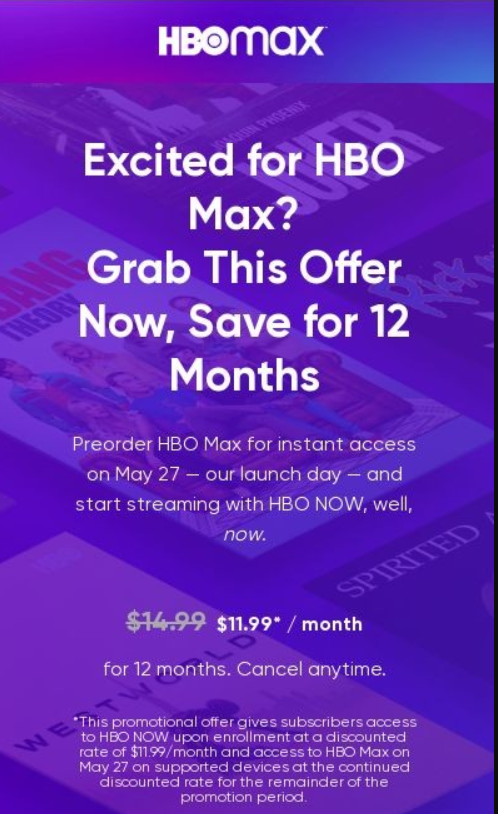
Because AT&T’s plethora of HBO offerings could be confusing, the company notified HBO Now subscribers the day before the Max launch that their HBO Now apps would automatically upgrade to HBO Max.
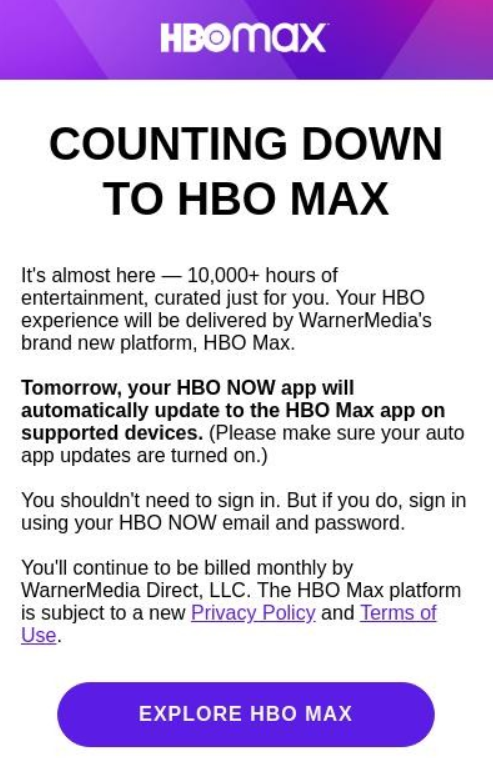
Focus on the breadth of content
Like its streaming video predecessors, HBO Max emphasized the variety of content available on its platform in launch marketing. The launch-day email featured a wide variety of content options, with top titles being HBO Max originals, followed by Friends, The Boondocks, and other series.
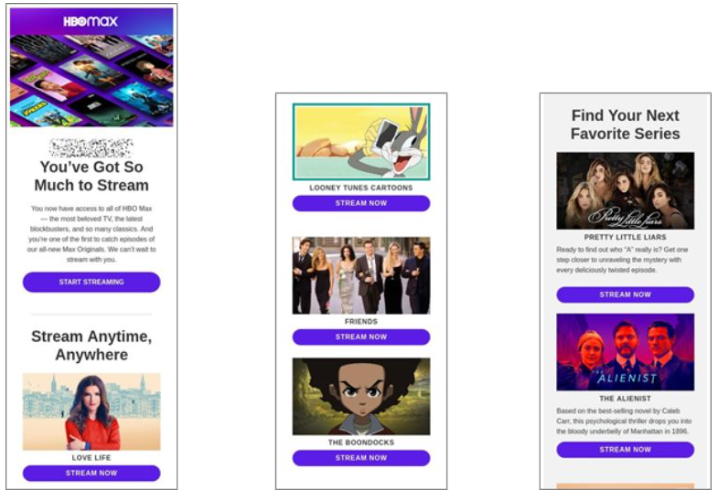
The approach of showcasing the platform’s wide range of content could also be observed in HBO Max national TV and Facebook ads. Display advertising tended to be more focused on single titles or a small group of content geared toward a target audience.
AT&T and pay-TV distributors helped awareness
Unlike most other major streamers, AT&T is able to piggyback off of its other services to promote HBO Max. AT&T quickly incorporated the new service by promoting a free year of it in AT&T TV and wireless promotions in digital and direct marketing channels.
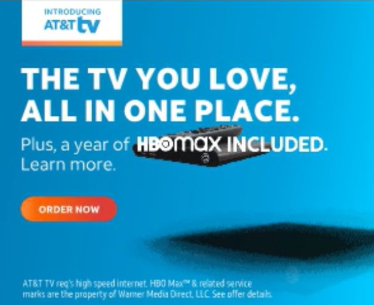
TV providers were also quick to inform their HBO subscribers of their free upgrade to HBO Max. At launch, HBO Max had distribution deals with every major TV provider, except for Comcast, which was quickly added on launch day.
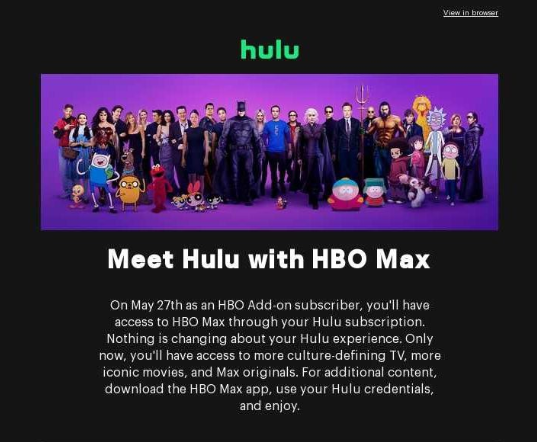
While HBO Max is available on many platforms, it is still absent from top streaming devices Amazon Fire TV and Roku.
Some platforms, such as Apple TV, helped spread the news about HBO Max to users at launch, but the same fanfare could not be found from the nation’s most-installed streaming devices: Fire TV and Roku. A quick look at tweets to @HBOMaxHelp reveals that many consumers are unhappy that they cannot access HBO Max on these devices. AT&T reported it has been unable to strike a deal it considers fair with either platform for distribution of its app.
What we think
All of this marketing isn’t helpful if interested consumers cannot access the service. HBO Max sits in a promising position, but it needs Roku and Amazon.
HBO has an avid following that it has built over many years of producing premium content. AT&T risks damaging relationships with these fans the longer HBO Max is not available on Roku and Amazon, since so many streamers use one of those platforms. If it does insist on remaining absent long-term (which would be surprising), AT&T will have to make plain to HBO Now subscribers on these platforms exactly why it has made this decision, and how it benefits them.
If the end goal is to unify HBO streaming services into HBO Max (AT&T hasn’t explicitly stated this, but it seems logical), then AT&T cannot afford to alienate large chunks of its HBO fans.



